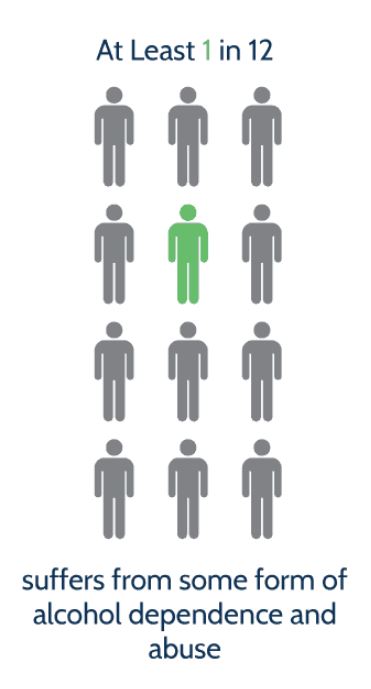How long does opioid withdrawal last?
Opioids are a class of drugs that include illegal substances like heroin and prescription painkillers, such as oxycodone, that doctors may prescribe to treat chronic pain. Even when used as prescribed, prolonged opioid use can lead to dependence, which means individuals can develop uncomfortable opioid withdrawal symptoms when they stop using them.
Opioids blocks pain messages between the brain and the rest of the body. This can relieve pain but also slow the heart rate and breathing. Opioid withdrawal symptoms are adverse effects that can happen if a person suddenly stops using or suddenly reduce the dosage of opioid medicine. Opioids are sometimes abused, as they can assist with mental relaxation and pain relief and can produce a sense of euphoria.
When someone stops taking an opioid drug suddenly, the first symptoms of withdrawal can appear within hours. Withdrawal from short-acting opioids like heroin can start within six to 12 hours of the last use and can continue for four to 10 days. How long opioid withdrawal lasts depends on the type of opioid you are taking. Longer-acting opioids like fentanyl and methadone take longer to leave the body, so withdrawal symptoms usually don’t emerge until 12 to 48 hours after last use. Withdrawal from these opioids also lasts anywhere from 10 to 20 days.
For short-acting opioids like heroin or oxycodone, withdrawal may last 3 to 5 days. Ways to treat mild opioid withdrawal include increased water and vitamin intake, while more severe withdrawal may require opioid use disorder medication and opioid detox treatment. For many people, withdrawal is the most challenging barrier to recovery because all its unpleasant symptoms make sufferers believe the only way to stop the pain is to use it again. Therefore, understanding the fundamentals of opioid withdrawal is a crucial step in preparing for treatment and long-term recovery.

Get Your Life Back
Find Hope & Recovery. Get Safe Comfortable Detox, Addiction Rehab & Dual Diagnosis Trused Care.
7/365 Line (844) 597-1011What Happens During Opioid Withdrawal?
Trying to eliminate or lessen opioid usage can cause some people to develop physical and psychological symptoms associated with opioid withdrawal due to the drug’s ability to alter their brain chemistry. After your body begins to adapt to the constant presence of the substance in your system, it becomes so accustomed to the presence of opioids that you’ll eventually find that you need to continue taking them to act ‘normally.’
Continued abuse of opioid drugs can lead to a tolerance to the substance, which means you’ll eventually need to take higher doses to achieve the same effects. If you attempt to stop taking the drug suddenly, your body cannot adapt quickly.
The result can mean experiencing unpleasant physical and psychological withdrawal symptoms. Some of the symptoms can be so awful that the person may be tempted to relapse and return to retaking opioid drugs to avoid feeling such horrible symptoms.
Unfortunately, if you had built up a tolerance to opioid drugs before trying to quit, you would likely attempt to take similar doses to what you were taking. You might not realize that you would have reduced your body’s tolerance levels when you tried to stop, which can lead to an accidental overdose.

Opioid Withdrawal Timeline
The Early Phase – Six to 24 Hours After Last Use
Beginning with cravings for more opioids and symptoms of restlessness and anxiety, the early phase of the opioid withdrawal timeline increases in its adversity as the calming effects of the drugs wear off and nervous systems are re-stimulated. Other signs and symptoms of the early phase in the opioid withdrawal timeline may include:
- Dilated pupils
- Uncontrollable yawning
- Runny nose
- Teary eyes
- Elevated heart rate and blood pressure
- Increased respiration
- Loss of appetite
- Cognitive and motor functioning difficulties
Get Help. Get Better. Get Your Life Back.
Searching for Accredited Drug and Alcohol Rehab Centers Near You?
Even if you have failed previously and relapsed, or are in the middle of a difficult crisis, we stand ready to support you. Our trusted behavioral health specialists will not give up on you. When you feel ready or just want someone to speak to about therapy alternatives to change your life call us. Even if we cannot assist you, we will lead you to wherever you can get support. There is no obligation. Call our hotline today.
(844) 597-1011The Acute Phase – 24-72 Hours After Last Use
Thoughts, emotions, pain, and stress become increasingly bothersome during the acute phase of the opioid withdrawal timeline which progresses in intensity, severity, and symptom logy, peaking at around 3-4 days. The withdrawal usually runs its course without intervention, and most physical symptoms disappear within days or weeks, depending on the particular drug.
Most individuals struggling with opioid addiction never complete the withdrawal process to this point or beyond because even as the physical symptoms continue after several days of abstinence, the acute psychological symptoms can linger for weeks.
During the acute phase of the opioid withdrawal timeline, the person experiences intensified early phase symptoms along with possible signs and symptoms of:
- Sweats, chills, and goose-bumps
- Gastrointestinal distress – nausea, vomiting, diarrhea, and cramps
- Muscle spasms, bone pains, and overall body aches
- Extreme restlessness and insomnia
- Fatigue, weakness, and trembling
- Dehydration
- Heightened sensitivities to internal and external stimuli
- Emotional instability – rapid mood swings, aggression, anxiety, depression, and possibly suicidal ideations

First-class Facilities & Amenities
Trusted Integrated Addiction & Mental Health Rehabilitation Treatment
Rehab Centers TourEstablished Addiction Centers. Serene Private Facilities. Inpatient rehab programs vary.
Addiction Helpline (844) 597-1011Comprehensive recovery success experience, backed by a Team w/ History of:
15+
Years of Unified Experience
100s
5-Star Reviews Across Our Centers
10K
Recovery Success Stories Across Our Network
- Low Patient to Therapist Ratio
- Onsite Medical Detox Center
- Comprehensive Dual-Diagnosis Treatment
- Complimentary Family & Alumni Programs
- Alumni Coaching, Recovery & Personal Development Events
The Post-Acute Withdrawal Syndrome (PAWS) Phase
Repeat intoxications and withdrawals from opioids have a harsh effect on neurobiological functions that help maintain a sense of well-being. Long after the drugs are out of the body, the residual effects are often intermingled with mental health disorders, social impairments, and environmental stresses that can subconsciously trigger cravings in an instant. The post-acute phase of the opioid withdrawal timeline can go on for years and last indefinitely.
What is PAWS?
Post-acute withdrawal syndrome (PAWS) is a collection of symptoms that emerge after the typical withdrawal period. Withdrawal syndrome refers to the symptoms that occur when a substance-dependent person abruptly stops taking that substance.
PAWS in Opioid Withdrawal
Reports estimate that as many as 90% of recovering users will encounter opioid post-acute withdrawal. Heroin and prescription pain medications are widely abused substances known to trigger post-acute withdrawal symptoms. Reports estimate that as many as 90% of recovering users will encounter opioid post-acute withdrawal.
Though the symptoms will vary with each person, PAWS symptoms for opioids include:
- Increased anxiety
- Depression
- Sleep problems
- Low energy
- Irritability
- Weight gain
- Increase in blood pressure
- Quicker breathing
- Menstrual changes
Former heroin and other opioid users frequently report attention, focus, and concentration problems during post-acute opioid withdrawal. Effects such as these can lead to interpersonal relationship issues and affect school and/or job performance.
Specialized, Accredited, 5-Star Reviewed, Evidence-based Addiction & Mental Health Programs. Complete Behavioral Health Inpatient Rehab, Detox plus Co-occuring Disorders Therapy.
CALL(844) 597-1011End the Addiction Pain. End the Emotional Rollercoaster. Get Your Life Back. Start Drug, Alcohol & Dual Diagnosis Mental Health Treatment Now. Get Free, No-obligation Guidance by Substance Abuse Specialists Who Understand Addiction & Mental Health Recovery & Know How to Help.
Beyond Opioid Detox Treatment: Residential Rehab and Dual Diagnosis
The body goes through specific symptom stages known as the opioid withdrawal timeline. The opioid withdrawal timeline varies from a few days to a few weeks, depending on the type of opioid used, how long it was used, and any other substances that may have been used in conjunction with opioids. Medically managed withdrawal or detoxification ensures the individual remains safe and stays as comfortable as possible.
Detox Treatment
The first step in treatment is detoxification. It will help you navigate the complicated withdrawal process but doesn’t address patterns of thought and behavior contributing to Tramadol abuse. Various treatment approaches and settings can help provide the ongoing support necessary to maintain long-term sobriety after you complete detox.
Cravings are very common during detox and can be challenging to overcome. This often leads to relapse. Constant medical care provided during inpatient treatment helps prevent relapse. Clinicians can provide necessary medication and medical expertise to lessen cravings and the effects of withdrawals.
Psychotherapy
Several different modalities of psychotherapy have been used in the treatment of depression, including:
- Cognitive Behavioral Therapy (CBT) – is an effective treatment that involves making changes in both the patterns of negative thoughts and the behavioral routines which are affecting the daily life of the depressed person for various forms of depression.
- Dialectical Behavioral Therapy – is a comprehensive mental health and substance abuse treatment program whose ultimate goal is to aid patients in their efforts to build a life worth living. The main goal of DBT is to help a person develop what is referred to as a “clear mind.”
- Person-Centered Therapy – is a strategy that allows and encourages clients to understand and resolve their concerns in a safe, supportive environment.
Dual Diagnosis Treatment
Substance abuse and mental health disorders often co-occur. In many cases, traumatic experiences can result in a mental health disorder and substance abuse. Dual diagnosis programs treat both of these issues together. The best approach for the treatment of dual diagnosis is an integrated system. This strategy treats both the substance abuse problem and the mental disorder simultaneously. Regardless of which diagnosis (mental health or substance abuse problem) came first, long-term recovery will depend largely on the treatment for both disorders done by the same team or provider.
Medication-Assisted Treatments
Medication-Assisted Treatments (MAT) for substance use and mental health disorders are commonly used in conjunction with one another. This includes the use of medications and other medical procedures. During your rehab, the staff from your treatment facility will help you identify what caused your addiction and teach you skills that will help you change your behavior patterns and challenge the negative thoughts that led to your addiction. Sometimes, the pressures and problems in your life lead you to rely on substances to help you forget about them momentarily.
If you or your loved one is suffering from Opioid withdrawal symptoms and addictions, help is a phone call away. Professional opioid addiction treatment is necessary for fast and effective recovery. Contact us today at We Level Up treatment facility. We provide utmost care with doctors and medical staff available 24/7 for life-changing and lasting recovery. We offer an enhanced opportunity to return to a fulfilling and productive life.

Experience Transformative Recovery at We Level Up Treatment Centers.
See our authentic success stories. Get inspired. Get the help you deserve.
Start a New Life
Begin with a free call to an addiction & behavioral health treatment advisor. Learn more about our dual-diagnosis programs. The We Level Up Treatment Center Network delivers recovery programs that vary by each treatment facility. Call to learn more.
- Personalized Care
- Caring Accountable Staff
- World-class Amenities
- Licensed & Accredited
- Renowned w/ 100s 5-Star Reviews
We’ll Call You








